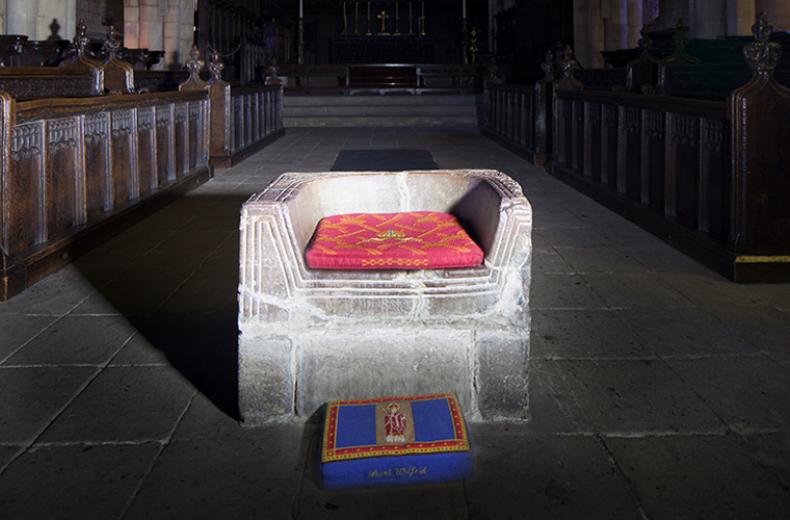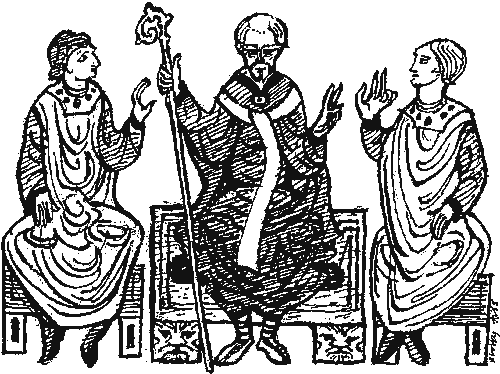Visitor Guide 12: Frith Stool

It is possible that Wilfrid had this solid block of sandstone fashioned into a seat when he first founded the monastery in 674, making it over 1300 years old and a place St Wilfrid likely sat himself. It is likely Wilfrid took inspiration from the Frith Stool’s he encountered on his journeys through France and Rome.
Wilfrid used stones brought from the Roman ruins at Corbridge to build his church, and this large block of stone may also have been quarried originally by Roman workmen. Wilfrid’s own Anglo-Saxon Northumbrians probably scooped out the seat and carved the simple patterns on the arms and front, including a triquetra.

The word ‘frith’ is of Anglo-Saxon origin, and means ‘peace, security and freedom from molestation’. In medieval England, it was possible for those fleeing conflict and persecution, and even justice, to claim sanctuary in a church. The frith stool, traditionally located near the high altar, was considered to be the safest and most protected place in the church for such refugees.
In Tudor times the right of sanctuary was strictly limited, as Henry VIII would allow no one to defy royal law; and it was completely abolished soon after. The Frith Stool became a redundant and awkward piece of furniture, leading to it being moved to wherever it was least in the way. It was most likely during one of these moves in 1830 or 1859 that it was broken and badly patched up.
In May 1908, when the new nave was completed, work began to re-arrange the Choir and to relay its whole floor. The stool is in the position seen today as it is believed to be the east end of Wilfrid’s church and therefore the original site of his throne.
